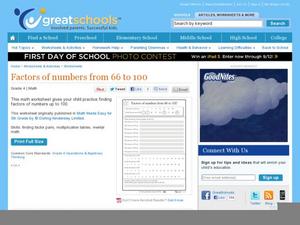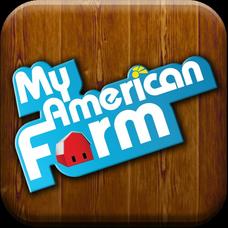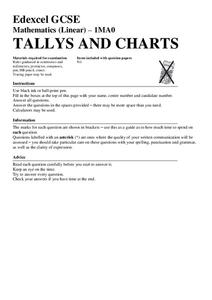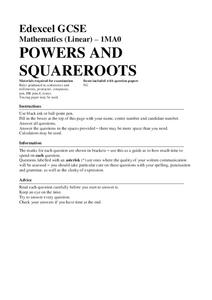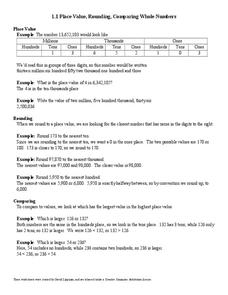Curated OER
And 1 More Makes...
If we add one more, how many will we have? Beginners to addition practice this skill using images and counting as they draw one more sock to each set and record the new total. There are three of these followed by four more similar...
Curated OER
And 5 More Makes...
By drawing five more objects to existing sets, scholars begin to understand the concept of addition. They count pails and draw five more, totaling them and recording the sums. There are three of these followed by four more similar...
Curated OER
Location on a Grid
Make coordinate pairs more engaging by having beginners color-code a grid based on given locations. The grid has numbers along the y-axis and letters along the x-axis, introducing them to the ordering of coordinate pairs with the x-axis...
Curated OER
Factors of Numbers from 66 to 100
Finding factors requires practice and a logical system, so help scholars develop this skill with these problems. They write out the factor list for 9 two-digit numbers and then circle the factors from a list for four more numbers....
Curated OER
Sorting the Animals
Does a fish have four legs? Of course not! Youngsters practice their counting (and animal attributes) skills as they determine which of each set of animals has a specified number of legs. They circle animals with four, six, two, and zero...
Curated OER
Learning 3 - Write the Number
Do this for numbers 1-10, but in this one youngsters just focus on the number three. First, they trace the digit three times (of course!) and try a few on their own. Next, scholars count how many bears, bowls, and beds there are, writing...
Curated OER
More Than or Less Than?
How many apples is less than five? Each of these problems has two images, one with quantifiable details and one without (i.e. a tree with apples and an empty tree). Answers will vary as young counters draw objects onto the second image...
Curated OER
Using Clocks: Analogue Clocks
What time is it? Have the class practice telling time to the half hour by reading and labeling each of eight clocks. On a second set of eight clocks, they use the time shown to draw in the missing clock hands. An answer sheet is...
Curated OER
Telling Time
Here's a great way for young time tellers to practice writing reading time words, then writing them out correctly. There are 15 watch faces with the time words above them. Kids write the actual time numbers, with the colon in between...
Illustrative Mathematics
Invertible or Not?
What determines whether a function has an inverse? Learners investigate that criteria when they examine values in a partially completed input-output table for two different functions. The task is to complete the table so that one of the...
Illustrative Mathematics
Influenza epidemic
This activity presents a real-world problem about an epidemic of influenza spreading through a city. Learners refer to a graph that shows the number of individuals infected in relation to the number of weeks that have elapsed since...
Illustrative Mathematics
Find The Numbers 0-5 or 5-10
In need of math station or center for your kindergartners? Model how to play this game with the whole class first and then make it into a center. Create a few sets of six number cards with 0-5 or 5-10 and then create a matching die with...
American Farm Bureau Foundation for Agriculture
My American Farm
Hee-haw! Have a bale of fun with these agricultural games! Five games are geared up for kindergarten through fifth grades and are useful for addressing Common Core standards in mathematics.
Illustrative Mathematics
3-D Shape Sort
From the apple on your desk and the coffee cup in your hand, to the cabinets along the classroom wall, basic three-dimensional shapes are found everywhere in the world around us. Introduce young mathematicians to the these common figures...
Illustrative Mathematics
Running Around a Track II
On your mark, get set, GO! The class sprints toward the conclusions in a race analysis activity. The staggered start of the 400-m foot race is taken apart in detail, and then learners step back and develop some overall race strategy...
Mathed Up!
Tallys and Charts
After watching a brief instructional video, young mathematicians are put to the test. By completing and reading frequency tables, tally charts, and bar graphs, individuals show their understanding of how to interpret data.
Mathed Up!
Negative Numbers
Individuals read tables with temperatures and times in order to distinguish the town with the lowest temperature or most extreme temperature difference. Each of the eight questions has three sub-questions that use the same charts.
Mathed Up!
Powers and Square Roots
Square root and exponential powers are the focus of the assessment worksheets included in a math resource. Young mathematicians answer 10 questions, each with subset questions, involving solving a variety of exponential equations...
Mathed Up!
Mean, Median, Mode, and Range
Learners read a variety of word problems and find the mode, median, range, and mode from a given set of data. If calculators are not desirable, provide the class with notebook paper to work out the equations.
Mathed Up!
Powers, Roots, and BIDMAS
Reinforce math skills with an eight-page exercise that stretches scholars' computation muscles through 13 order of operation problems.
Mathed Up!
Ratio
Reinforce math skills with an eight-page exercise comprised of 15 problems covering the concept of ratios.
Open Text Book Store
Arithmetic for College Students: Worksheets
Loaded with concepts ranging from multiplying decimals to converting units to solving problems using the order of operations, a thorough practice packet is perfect for a fifth or sixth grade math classroom.
College Board
Teaching Students How to Write AP Statistics Exam Responses
But this is math—we don't need to know how to write! The article makes a point that class members in AP® Statistics should be comfortable writing as the exams require it. Individuals quickly realize that quality writing is crucial...
Curriculum Corner
Math About Me!
Get to know your scholars with a worksheet that focuses on the important numbers that make up their life. Pupils answer questions such as how many letters are in their name, how old are they, how tall are they, how many siblings do they...
Other popular searches
- Shared Reading and Math
- Math Cloze Activity
- Math Fluency
- Math and Reading
- Content Reading Math
- Reading Math Operations
- Math Fluency Lesson Plans
- Math Reading Circle Graphs
- Math Cloze Sentences
- Integrating Reading and Math
- Math Lessons Chart Reading
- Math Reading Problems



